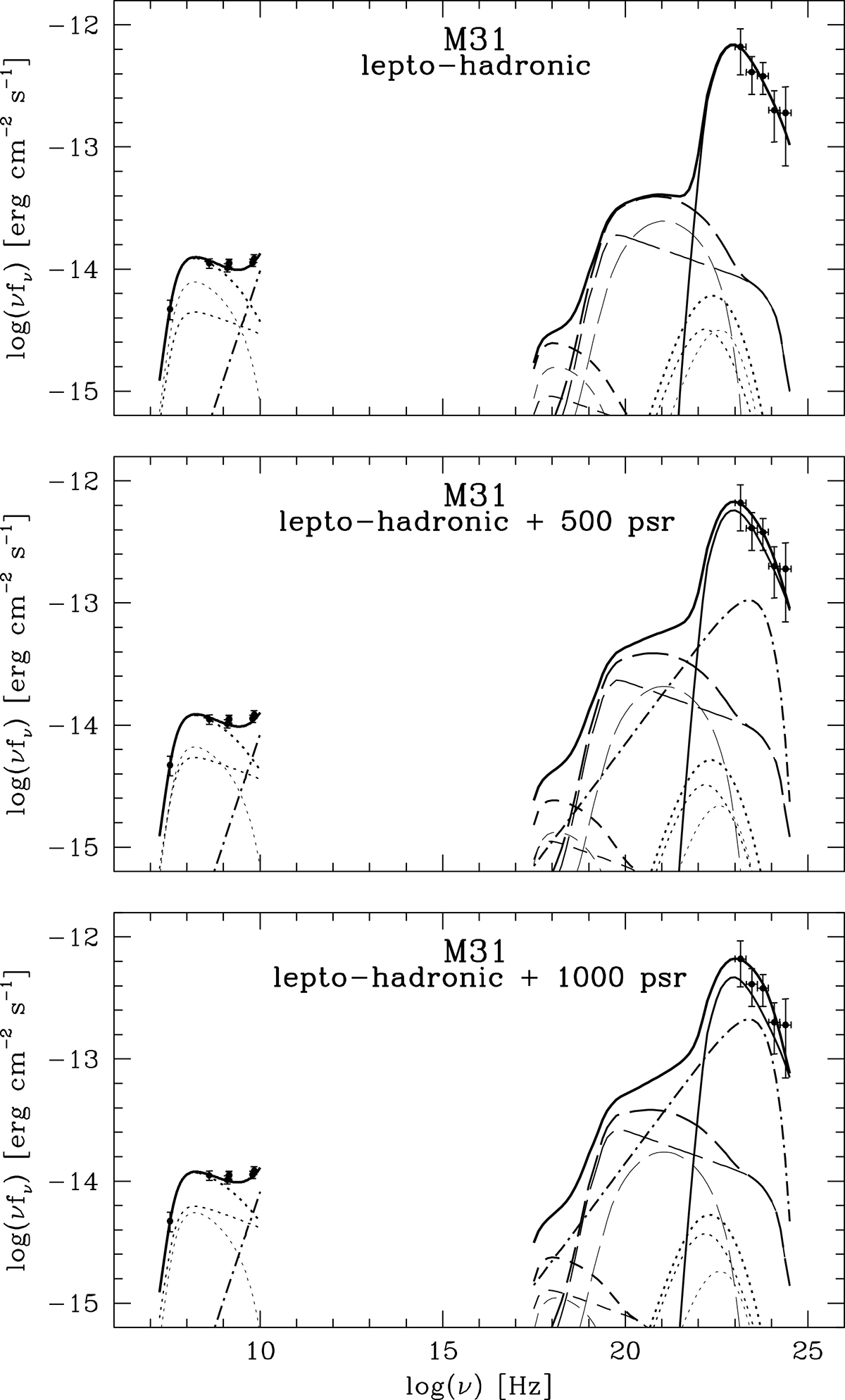Fig. 3.

Download original image
Broadband lepto-hadronic SED of the M31 central source: data points are shown as dots (with errorbars indicating frequency and flux uncertainties), model predictions as curves (top). The galaxy-wide flux densities of Battistelli et al. (2019) have been renormalised to the region encompassed by R⋆ (i.e., ∼15% of the total emission; see Sect. 4.1.2). Emission components are denoted by these line types: radio synchrotron, dotted; thermal free–free emission, dot-dashed; total radio, solid; Comptonised CMB, short-dashed; Comptonised starlight (EBL+FGL), long-dashed; non-thermal bremsstrahlung, dotted; pionic, solid. Leptonic emission includes that from primary and secondary electrons(secondary components are dominant). In the X-ray/γ-ray range, on top of the separate components, a thick solid line indicates the total emission. Same for a broadband PSR+LH SED (middle). The 500 pulsars emission component (see text) is ahown as a dot-dashed line. Same as above but for 1000 pulsars (bottom). Note: in this case the secondary leptonic components are subdominant.
Current usage metrics show cumulative count of Article Views (full-text article views including HTML views, PDF and ePub downloads, according to the available data) and Abstracts Views on Vision4Press platform.
Data correspond to usage on the plateform after 2015. The current usage metrics is available 48-96 hours after online publication and is updated daily on week days.
Initial download of the metrics may take a while.


